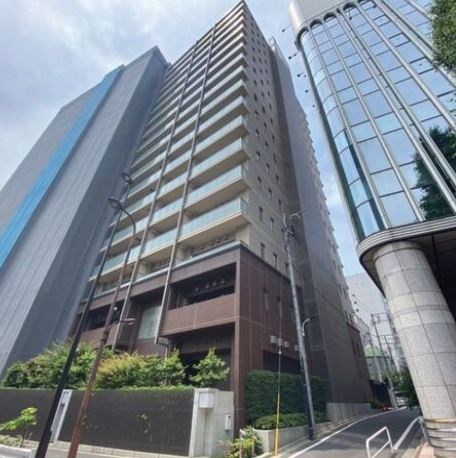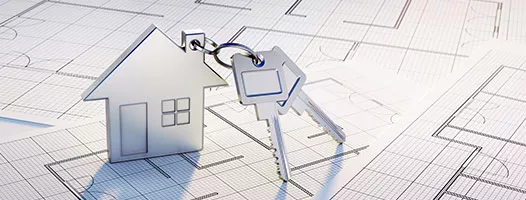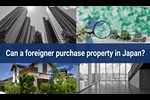Standard Land Price for Tokyo in 2023 – 4.5% Rise in the Commercial Areas, increase in rise in the Residential Areas

On September 19th, the Ministry of Land, Infrastructure, Transport and Tourism announced the standard land prices for their selected points nationwide. On the same day, the Tokyo Metropolitan Government also announced the land prices of their selected locations in Tokyo. The standard land price (*later explained in more detail) refers to the price of land per 1 square meter for selected locations as of the 1st of July each year.
The average rate of land price fluctuation for all usages in Tokyo has increased by 3.6% from 2022 (1.7% in 2022), which is the 11th consecutive year of the increase rate. For Commercial Areas, the average price fluctuation rate has increased by 4.5% (2.0% in 2022), which is the 2nd consecutive year of the increase rate, and for Residential Areas, the average price fluctuation rate has also increased by 3.0% (1.5% in 2022), which is the 11th consecutive year of increase. The impact of Covid-19 pandemic on economic activities is easing, and it seems that the upward trend of land prices has been coming back mainly in more convenient areas.
Commercial Area
The average land price fluctuation in Tokyo has increased in rise by 4.5% from 2.0% (in 2022). This year’s average price fluctuation within the 23 wards of Tokyo is 5.1% from 2022, which has also increased in rise from 2.2% in 2022. The average rate of increase in “5 wards in Central Tokyo” has marked 4.3%, and the increase ranking of the 23 wards has shown that Kita-ku gained the largest increase rate at 7.3% (3.7% in 2022), followed by Taito-ku (increased by 7.0%) and Bunkyo-ku (increased by 6.8%).
Among the 23 wards, the highest rate of increase was gained in Asakusa 1-chome in Taito-ku (increased by 11.9%), and top 4 price increase points were gained around Asakusa Station. It reflects the recovery of tourism by both foreign and domestic travelers. The 5th and 6th price increase points were around Kitasenju Station (Adachi-ku), which is served by various train lines.
On the other hand, in the land points of the downtown and office building cluster in Chuo-ku and Chiyoda-ku, where the land prices declined in 9 land points in 2022, all the land point prices have started to rise, except for 2 points in Chiyoda-ku where the prices did not fluctuate.
The highest price point in Japan—remaining unchanged for 18 consecutive years—is the Meijiya Ginza Building at 2-6-7, Ginza, Chuo-ku. The price, 40,100,000yen per square meter (39,300,000yen in 2022) has increased by 2.0%, which turned to positive fluctuation for the first time in 4 years.
Residential Area
The average price increase within Tokyo was 3.0%, which is an increase of the positive fluctuation from 1.5% in the last year (2022). Looking at the 23 wards, the average fluctuation rate was 4.2%, which is an increase from 2.2% in 2022. The highest increase in price for residential areas within 23 wards this year was 6.2% in Toshima-ku (3.3% in 2021), followed by 6.1% in Bunkyo-ku, and 5.5% in Shinagawa-ku and Arakawa-ku. The average fluctuation for the 5 wards in Central Tokyo was 4.5%(3.1% in 2022) and the same for other wards was 4.1% (2.1% in 2022), both of which marked an increase in positive fluctuation from the rates in 2022.
In the 23 wards, the land point in Kitaotsuka 1-chome, Toshima-ku, near JR Otsuka Station, which has risen by 6.9%, has been ranked as the largest rate of increase. There was no point of decline in the 23 wards. The rate of increase was high in the areas more convenient to live in. The highest land price point in Tokyo was 5,240,000yen per square meter (4.0% up from 2022) at Akasaka 1-chome, Minato-ku.
Land Prices (Nationwide)
Noteworthy points about this year’s standard land prices (as of July 1st) announced by the Ministry of Land, Infrastructure and Transport, is that the national land price fluctuation average for all types of land usage have shown an increase of 1.0% (0.3% in 2022), which is the 2nd consecutive year of increase. The average rate of increase fluctuation was higher than 0.4% in 2019, which is the rate level before the Covid-19 pandemic, and the recovery trend became clear. The national average fluctuation for the residential areas was increased by 0.7% from 2022, and the national average for the commercial areas was increased by 1.5%, both of which saw the 2nd consecutive year of increase. Also in the regional districts, for both residential and commercial areas, the average land prices turned to positive fluctuation.
With the resumption of economic activity after Covid-19 pandemic in Japan, the influx of foreign tourists is increasing mostly in the metropolitan areas and pushing up the land prices in the downtown areas and tourist spots. A main focus going forward will be on the trends in overseas money, which supported the land prices during the pandemic.
In Japan under a low-interest rate economic environment, it is easy to make a profit from investing in real estate in Japan by selling U.S. dollars and buying Japanese Yen. On the other hand, it is not clear how long the ultra-low interest rates in Japan will last, while central banks of other countries are tightening their monetary policies in response to soaring global prices, and such trends are raising interest rates and changing the investment environment completely.
China’s real estate recession may be also a new risk associated with overseas money. Some market participants have pointed out that a deterioration in China’s real estate market could affect the investment attitudes mostly among Asian investors who have been supporting the market in Japan.
Ranking by Top 5 Price Increase points and Decrease points(23 Wards)
Commercial Area saw rises across the board
| Address Points | Price(1000Yen/㎡) | Fluctuation(%) | |
|---|---|---|---|
| ▼Address of Price Rise Points | |||
| Commercial Area | ➀ 1-29-6, Asakusa, Taito-ku | 2,540 | 11.9 |
| ➁ 2-13-10, Nishi-Asakusa, Taito-ku | 1,840 | 11.5 | |
| ➂ 1-30-11, Asakusa, Taito-ku | 1,330 | 9.9 | |
| ➃ 1-9-2, Asakusa, Taito-ku | 2,890 | 9.9 | |
| ➄ 3-70-2, Kita-Senju, Adachi-ku | 1,700 | 9.7 | |
| ▼Address of Price Rise Points | |||
| Residential Area | ➀ 1-24-3, Kitaotsuka, Toshima-ku | 770 | 6.9 |
| ➁ 8-4-7, Minami-Senju, Arakawa-ku | 683 | 6.9 | |
| ➂ 1-36-11, Takada, Toshima-ku | 730 | 6.9 | |
| ➃ 1-5-17, Kugayama, Suginami-ku | 798 | 6.8 | |
| ➄ 4-16-3, Nishi Ikebukuro, Toshima-ku | 691 | 6.8 | |
(Source for data: Tokyo Metropolitan Government Bureau of Finance, Nihon Keizai Shimbun *Round off to one decimal place)
What is the Standard Land Price?
The standard land price is the price of land per 1 square meter and is calculated for each selected point of land as of the 1st of July each year. The Prefectural Governments are responsible for its survey and the Ministry of Land, Infrastructure, Transport and Tourism release the nationwide results. It is one of two major pieces of representative data showing the fluctuation of land price, along with the official land price, and its results are announced on the 1st of January of each year.
* Reference source: Nihon Keizai Shimbun, Tokyo Shimbun dated September 20, 2023
>> Real Estate Pricing in Japan - 6 different land prices

- Rental Apartments & Houses in Tokyo
- Listings of popular and luxurious rental apartments, condominiums, and houses designed with expats in mind.

- Apartments & Houses for Sale in Tokyo
- Listings of apartments, condominiums, and houses available for purchase in Tokyo.





















